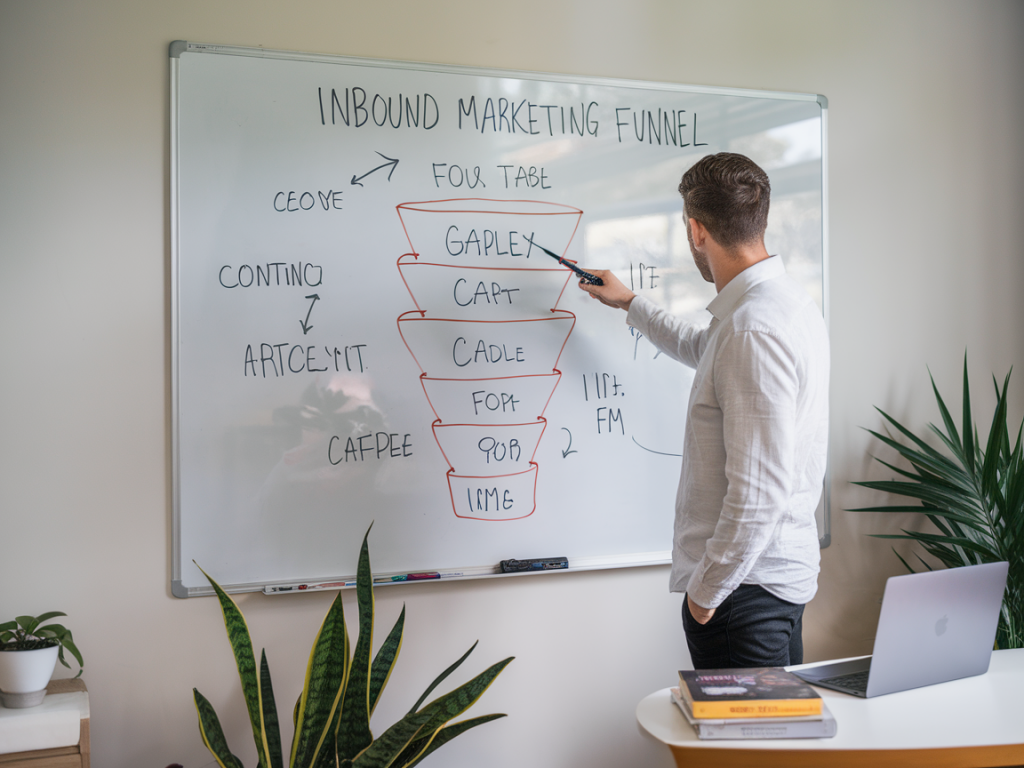When I started diving deep into inbound marketing, my biggest “a-ha” moment came when I realized that most entrepreneurs—me included at the time—completely misunderstood the purpose and structure of the inbound marketing funnel. We were treating it like a one-and-done system when in reality, it’s a dynamic process that requires continuous growth, testing, refinement, and empathy for the customer journey.
If you’re an entrepreneur struggling to turn website visitors into loyal customers, chances are you’ve been misusing—or underutilizing—your marketing funnel. Let's fix that together.
Why the Inbound Marketing Funnel Is Often Misunderstood
So many of us start with this oversimplified idea that the funnel is linear: you attract leads, nurture them, convert them, and the job is done. But the funnel isn’t a straight line; it’s more like a cycle (some call it a flywheel now) where every stage can feed into another—especially when you consider post-sale advocacy and referrals.
Here’s what I often see entrepreneurs getting wrong:
- Over-focusing on acquisition: They pour resources into ads, SEO, or social media without thinking about what happens after someone clicks.
- Neglecting the nurturing phase: Building an email list is great, but then what? Without proper nurturing, that list quickly turns cold.
- Assuming conversion is the end goal: It’s not. Retention and satisfaction are the real growth levers.
It’s time to reframe the funnel, not as a sales tool, but as a system for building trust and long-term loyalty.
The Real Purpose of Each Funnel Stage (And How to Do It Right)
Let’s walk through the actual funnel and I’ll show you how I coach my clients—or structure things myself—at each stage.
Attract: Be Findable and Valuable
This is the top of the funnel (TOFU), and the goal is to attract the right people to your brand. This is where SEO and content marketing shine. But one major issue? Too often people create content just for search engines, not for humans.
Here’s how I approach it differently:
- User-first SEO: Sure, I optimize for keywords. But I also focus on intent. What is someone really looking for when they Google “how to rank on Google in 2024”?
- Content with a strong POV: Don’t just echo what everyone else says. Share your experiences, use your voice. That’s what makes your blog resonate and attract.
- Semi-viral content formats: I’ve had great success with comparison posts (like “HubSpot vs. ActiveCampaign”), myth-busting blogs, and niche case studies.
Engage: Start the Relationship
This is where most entrepreneurs drop the ball. They attract attention, and then… silence. Remember: attention doesn’t equal trust. Engagement builds that trust slowly over time through consistent, relevant, and helpful interactions.
Some tactics I swear by:
- Email series that educates & connects: Instead of a single welcome email, I build 4–5 emails that tell a story, solve a real problem, and invite action.
- Interactive content: Quizzes, calculators, assessments—these boost time-on-page and create emotional investment. One of my e-commerce clients tripled their opt-in rate just by adding a “Find your perfect product” quiz.
- Value-packed lead magnets: Your PDF guide isn’t enough. Create resources people would honestly pay for, like a Notion template, a free mini-course, or a niche-specific checklist.
Convert: Create an Irresistible Offer
This is usually considered the bottom of the funnel (BOFU), and it’s where you make the sale. But here's where most mistakes happen: people pitch too early or too generically.
To convert effectively, I focus on:
- Segmented messaging: Sending the same email pitch to everyone is lazy. Use tags, behaviors, and lead source data to create tailored funnels.
- Social proof everywhere: Testimonials, case studies, and user-generated content have moved the needle more for my clients than any fancy landing page redesign.
- Clear, specific CTAs: “Get started” is vague. “Start your 7-day free trial and double your email list” is clickable.
Delight: The Forgotten Funnel Stage
Once someone converts, most marketers stop. But one of the biggest wins I’ve seen in my own business came from doubling down on the post-purchase experience.
Here’s why: Delighted customers become referrers, reviewers, and repeat buyers. That means your funnel gets an organic boost without even touching paid traffic.
My go-to strategies in this phase:
- Onboarding sequences that actually help: Don’t just say “Congrats!”—guide them through how to use what they just bought.
- Ask for feedback, then act on it: A simple Typeform survey helped me uncover a major gap in my SEO course content—which led to a complete relaunch and better reviews.
- Loyalty flows: Use automation tools like Klaviyo or ActiveCampaign to recognize milestones, reward loyalty, and re-engage past buyers.
A Better Way to See the Funnel: Think “Flywheel”
HubSpot popularized the idea of the flywheel as a more accurate representation of the modern buyer's journey. In this model, customers are not just the output—they are fuel.
When your existing customers start referring others, reviewing your product, or upgrading their subscriptions, you’re creating compounding momentum across the entire funnel.
| Funnel Stage | Flywheel Impact |
|---|---|
| Attract | Earned media, content sharing, word-of-mouth |
| Engage | Personalized experiences improve conversion rates |
| Convert | Delighted customers lead to referrals |
| Delight | Builds brand advocacy and long-term growth |
If you adopt this mindset and build systems that reinforce each stage of the funnel, you’re not just doing inbound marketing—you’re creating a self-sustaining ecosystem for growth.
In my own business at Inbound SEO, I try to live this cycle every day—whether it’s through securing organic traffic from evergreen content, nurturing my email list with real value, optimizing conversion paths, or building customer success workflows that generate buzz organically.
Truthfully, when you stop thinking of the funnel as a straight line and start thinking of it as a living, breathing relationship with your audience, everything changes. That’s the real power of inbound marketing—and why I’m so passionate about it.
